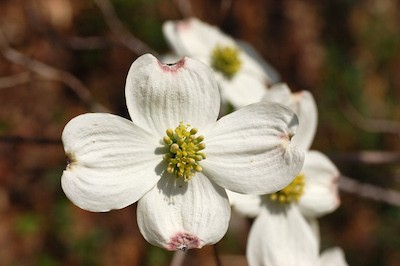The Urban Gardener: Cheerful Daffodils





 Email to a friend
Permalink
Email to a friend
Permalink
Saturday, May 03, 2014
Leonard Moorehead, GoLocalWorcester Gardening Expert
Urban gardeners face many challenges. Space is at a premium. Movement from neighborhood to neighborhood urges the quick fix. Utility and time toss the salad bowl of concerns. Fresh produce free from the chemical stew of industrial agriculture motivates most of us. Freedom from pesticides, herbicides, lengthy transportation, worker exploitation, and much more puts gardeners at the forefront of healthy living. Is a garden in the city possible? Can we be independent? Can we provide ourselves with solutions to these conundrums? The answer is a resounding yes. There is more. We can provide ourselves with fresh food and also garnish the soul. Don’t forget to plant for beauty and spirit. Daffodils fit the bill on many levels.
Planting season is upon us. Endive, lettuces, spinach, peas and other cool weather plants are ready to plant. Mesclun mixes assure gardeners the less familiar are introduced to the garden. Kale is the new health food. Don’t overlook the unfamiliar. Our cultural pluralism is a fine way to learn from other gardeners produce rarely found in commercial markets. Mustard, collards, and cress are examples of under planted spring greens. Look around your community garden. Observe neighbors. Asian green vegetables offer alternatives rarely found elsewhere.
The rising tide of warmer days, spring showers, and innate desire can bewilder the gardener. Choices abound. There are no rigid rules for each gardener. Rather a garden is a signature work of art. A garden reflects the gardener and no two are alike. Spacious backyards or the square surrounding a sidewalk tree offers opportunities. Plant cool weather vegetables on the shoulders of the year, spring and fall. Take advantage of the cool weather preferences for crop succession. When warm weather settles in and our feet vote for days at the seashore or drives in the country, there are plenty of vegetables that require sweltering temperatures. They can be grown in the same space as the spring vegetables are harvested.
Yet people live on far more than fresh food. Urban life places many demands upon our attention, distracted or impaired drivers ignore stop signs, uncertain employment absorbs energy, noise and crowds places demands upon us. Breath deep. There is a quiet alternative that allows the garden to feed not only the body but also the soul. Every garden has a spot for appeals to peace and beauty. Nothing compares to the cheerful daffodil.
The Narcissi tribe of bulbous perennial plants is large. Daffodils are best known. Cousins are jonquils, paper white narcissus, and new versions of old favorites. Nothing inspires so easily as a clump of butter yellow daffodils. There are petite varieties and new colors. Explore.
Involve children. Large bulbs are easy for small hands to grasp; they are tough and can handle rough treatment. The amateur gardener easily learns plant anatomy from a daffodil bulb. The bottom roots section is distinct from the top. A trowel depth is fine for each bulb. Do not stand on ceremony. Rather scatter prime numbers, 3, 5, 7 and so on for a less formal presence. Daffodils do well tucked into corners sunny in spring but deeply shaded in the summer. Dig a trowel depth, mix in some bone meal, compost and peat moss, and place the bulbs bottom down. Tamp down the soil with conviction but not sternness. Water.
Daffodils are a certain defense against marauding squirrels. These omnipresent animals thrive in our cities. They have an appetite for tulips and crocus bulbs. Their constant digging annoys. Eating our plantings assures distain. Avoid these emotions in the garden. Daffodils are poisonous to squirrels, woodchucks, skunks and raccoons. The Narcissus family of flowering bulbs deters these common pests from foraging their way through the garden. They are not the final answer in this eternal conflict. Yet, a battle at a time, their protection compliments strategies against varmints.
Daffodils offer peaceful solace. Perhaps the best known color is yellow. Don’t stop there. Diploid or double petal varieties are widely available and affordable. Pink, apricot and white types all share the same cultural practices. They multiply and reward one planting year after year. Some vacant lots around our cities are punctuated by daffodils who return each spring long after the buildings and people are no longer present. Hope and endurance carry most of us through life. The burden is lighter when shared by simple beauty. The gardener is a complex creature. We respond to loveliness with positive emotions. Stress fades away. Change your posture and lay down for fresh perspectives. Rise refreshed.
Spring greens are important sources of nutrients and taste. Homegrown is economical. Health is nurtured free from chemicals. We must consider the emotional esthetics when planting. Once done with flowering gardeners lift and divide daffodils to give the bulbs room to expand and form new plants. Exchange varieties with other gardeners. Make friends over a golden host of flowers. We grow in many ways. Don’t overlook the beneficial aspects of color, shape and form. Plant daffodils in the fall or lift and divide old clumps in the spring. Each method is inexpensive and easy. Leave the garden with a song in your heart. All are the better for it.
Related Slideshow: Spring Flower Shows, Gardens, and Art

Prev
Next
Bay State African Violet Show
Tower Hill Botanic Garden
Boylston, MA
April 26, 2014 to April 26, 2014
The Bay State African Violet Society puts on another spectacular show featuring America’s favorite houseplant, the African Violet. All are welcome to enter their own plants and floral designs for judging to win ribbons and prizes. Participate in workshops on African Violet care. Start your own collection at the sale, where commercially grown plants and supplies are sold, along with plants grown by members.
Link

Prev
Next
Blithewold Mansion, Gardens & Arboretum
Bristol, Rhode Island.
Nothing says spring like tens of thousands of brilliant yellow daffodils blooming at Blithewold. The sight of blooming flowers and budding trees help us forget a dreary winter and look forward to summer’s sun. Blithewold is a 33-acre summer estate with grand views of Narragansett Bay. The property features a 45-room mansion filled with family heirlooms framed by a series of lovely gardens. On May 4, there is a Spring Flowering Tree Walk.
Link

Prev
Next
Spring Primrose Show
Tower Hill Botanic Garden
Boylston, MA
May 3, 2014 to May 4, 2014
The New England Chapter of the American Primrose Society presents dozens of varieties of primroses! Browse all the varieties and learn how to grow these colorful plants. Lectures will include “How to Grow Primroses from Seed”.
Link

Prev
Next
The 79th Annual Dogwood Festival
Greenfield Hill Congregational Church
May 2–4, 2014
For 79 years now, Greenfield Hill Church has welcomed the community to share in the beauty of spring at its annual Dogwood Festival. Enjoy music, antiques, kids activities and art and crafts amidst the beauty of the pink, white, and purple blooms.
Link

Prev
Next
Lilac Sunday
Arnold Arboretum
Boston, MA
May 11, 2014 to May 11, 2014
Every spring the Arnold Arboretum singles out the lilac to be honored with a daylong celebration. With more than 370 lilac plants of 176 kinds, the Arboretum holds one of the premier lilac collections in North America. The day includes tours of the lilacs, family activities, food vendors, and picnicking (on this special day only). The Arboretum is open from dawn to dusk.
Link

Prev
Next
Art in the Garden Festival
Cape Cod Art Association
Hyannis, MA
May 17, 2014 to May 18, 2014
Come and celebrate art in the outdoors at Aselton Park. Cape Cod Art Association presents its first annual spring fundraiser, “Art in the Garden” sponsored by Hyannis Country Garden. Join a weekend of celebrating art in the outdoors including food vendors, music, children’s entertainment, and plein air painters. Hyannis Country Garden will be selling plants and offering demonstrations for incorporating garden art into your landscaping.
Link
Enjoy this post? Share it with others.





 Email to a friend
Permalink
Email to a friend
Permalink
















Follow us on Pinterest Google + Facebook Twitter See It Read It